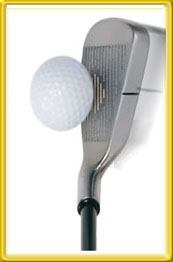
Golf Ball Compression
Golf ball compression refers to the degree to which a golf ball is compressed when it is struck by a golf club. It is an important factor that affects how the ball reacts when it is in flight and upon landing. The compression of a golf ball is measured in numbers ranging from 0 to 200.
Factors Affecting Compression
- Swing Speed: The compression of a golf ball is primarily influenced by the swing speed of the golfer. A higher swing speed typically requires a higher compression ball to optimize distance and control.
- Ball Construction: The design and materials used in a golf ball impact its compression. Multi-layer balls with a soft core tend to have lower compression, while balls with a hard core generally have higher compression.
- Temperature: The ambient temperature can affect ball compression. Higher temperatures tend to increase ball compression, leading to slightly longer distances, while lower temperatures decrease compression and may result in reduced distance.
Compression Categories
Golf balls are categorized into low, mid, and high compression ratings based on their compression numbers. These categories determine the ideal ball for different types of players and swing speeds.
Low Compression
- Compression Rating: Below 70
- Recommended for: Players with slower swing speeds, beginners, and seniors
- Advantages:
- Higher launch angle
- Greater distance with slower swing speeds
- Softer feel
Mid Compression
- Compression Rating: 70-90
- Recommended for: Players with moderate swing speeds
- Advantages:
- Good balance between distance and control
- Suitable for a wide range of golfers
High Compression
- Compression Rating: Above 90
- Recommended for: Players with faster swing speeds and professionals
- Advantages:
- Lower spin rates
- Increased control
- Optimal for long-distance shots
Selecting the Right Compression
Choosing the right compression golf ball is essential to maximize performance and optimize distance. It is important to consider your swing speed and skill level when selecting a ball.
- Low compression balls are suitable for players with slower swing speeds, beginners, and seniors.
- Mid-compression balls offer a balanced performance for golfers with moderate swing speeds.
- High compression balls are designed for players with faster swing speeds and professionals.
Additionally, it is recommended to try out different compression balls and analyze their feel and performance to determine the best fit for your game.
Conclusion
Golf ball compression plays a crucial role in the performance and feel of the ball. By understanding the different compression categories and considering factors such as swing speed, ball construction, and temperature, golfers can choose the appropriate compression ball to optimize their game.
Remember, finding the right golf ball is a personal preference, and experimenting with different compression options can help identify the perfect choice for your individual playing style and skill level.






